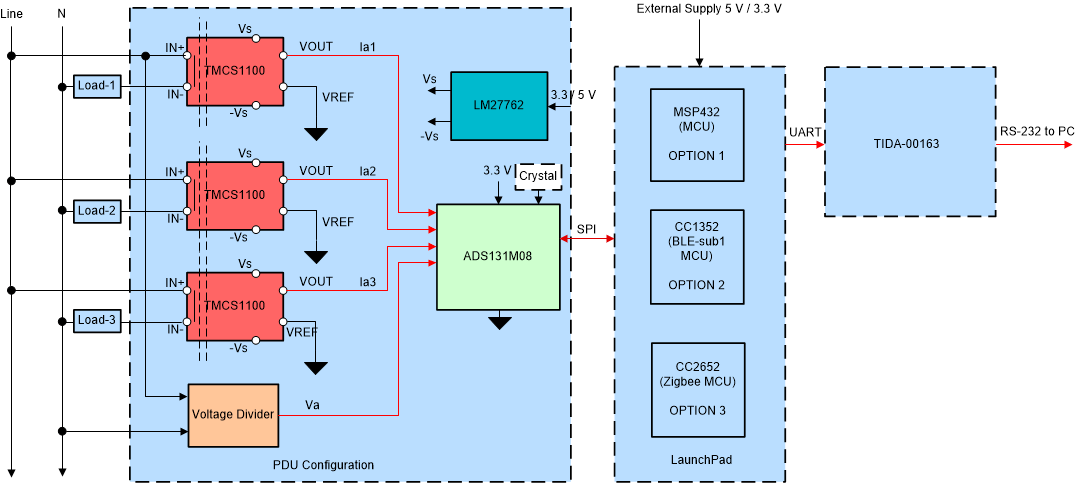SBOA444 November 2020 TMCS1100
2 Implementation Block Diagram
 Figure 2-1 Block Diagram.
Figure 2-1 Block Diagram.
The other three channels of this device are used to sense the current of the different outlets. Each current channel uses the TMCS1100 Hall-effect current sensor to translate the sensed current into a voltage sensable by the ADS131M08 ADC. To fit within the input voltage range of the ADS131M08, level shifting is necessary. This level shifting is accomplished by using the LM27762 charge pump to create 2.5-V and –2.5-V voltage rails that power the TMCS1100.
The ADS131M08 uses a crystal connected to its XTAL1 and XTAL2 pins to generate an
internal clock, fCLKIN. The ADS131M08 internally divides this clock by
two and uses this divided down clock as the delta-sigma modulation clock,
fM. The sampling rate of the ADS131M08 is therefore defined as
fs = fM / OSR =
fCLKIN / (2 × OSR). Whenever there are new samples available, the
ADS131M08 asserts its DRDY pin to notify the microcontroller
that new samples are available. The microcontroller would then use one of its SPI
interfaces and its DMA to get the voltage and current samples from the ADS131M08
device. The microcontroller uses the new voltage and current samples for the
calculation of the metrology parameters, such as the power and RMS readings.
The ADC connections to the microcontroller are brought out the LaunchPad connector of the design, which allows for different microcontrollers to be used as the metrology microcontroller by connecting the corresponding microcontroller LaunchPad to the LaunchPad connector of the design. For this specific implementation, the MSP432P4111 device was used as the metrology microcontroller by connecting the MSP-EXP432P4111 LaunchPad to the LaunchPad connector of the design.
For calibrating and testing the design, a PC GUI was used. The PC GUI communicates to the design through an isolated RS-232 connection created by the TIDA-00163 board. The TIDA-00163 board connects to a set of UART transmit (pin P2.5 on the MSP432) and receive (pin P2.3 on the MSP432) pins pin from the MSP432. The board isolates the signals from these pins and then translates the isolated signal to RS-232 signal levels. The resulting RS-232 signals are sent to the RS-232 connector of the TIDA-00163, which the PC is connected to.